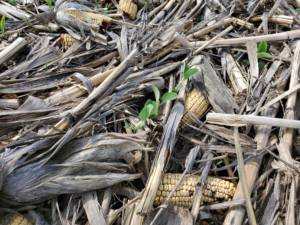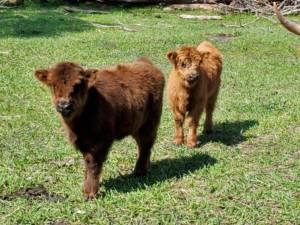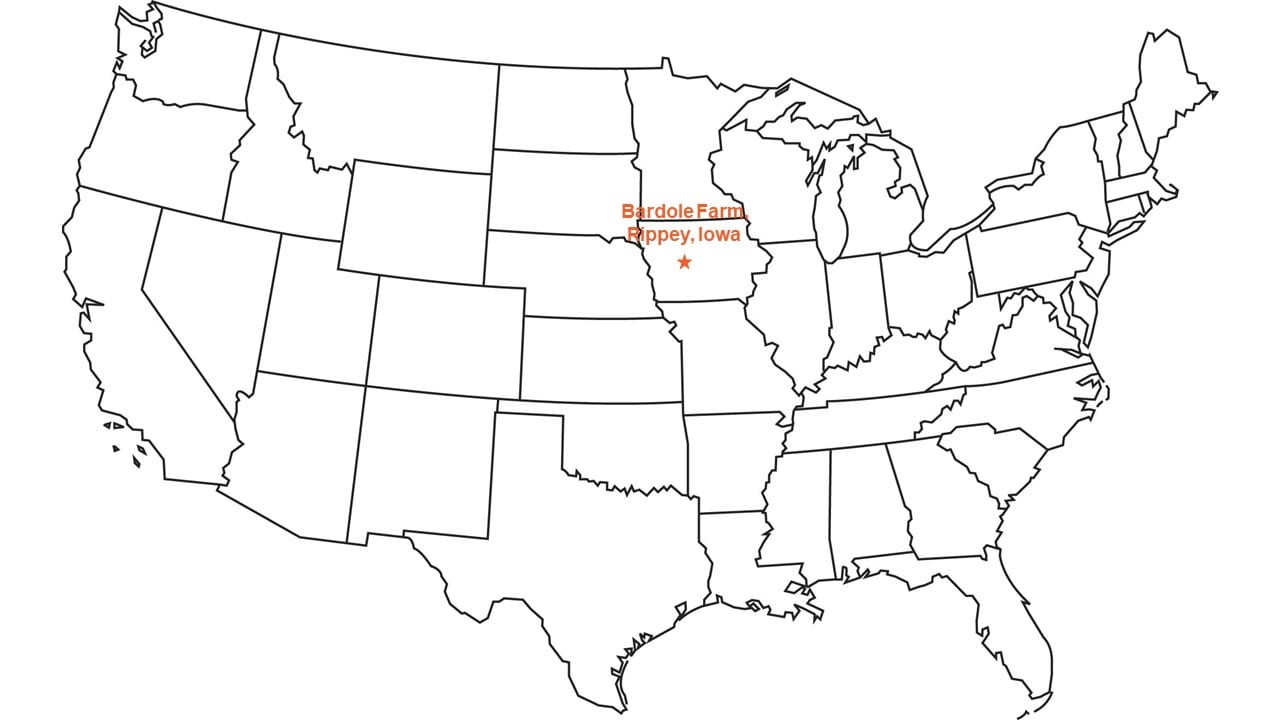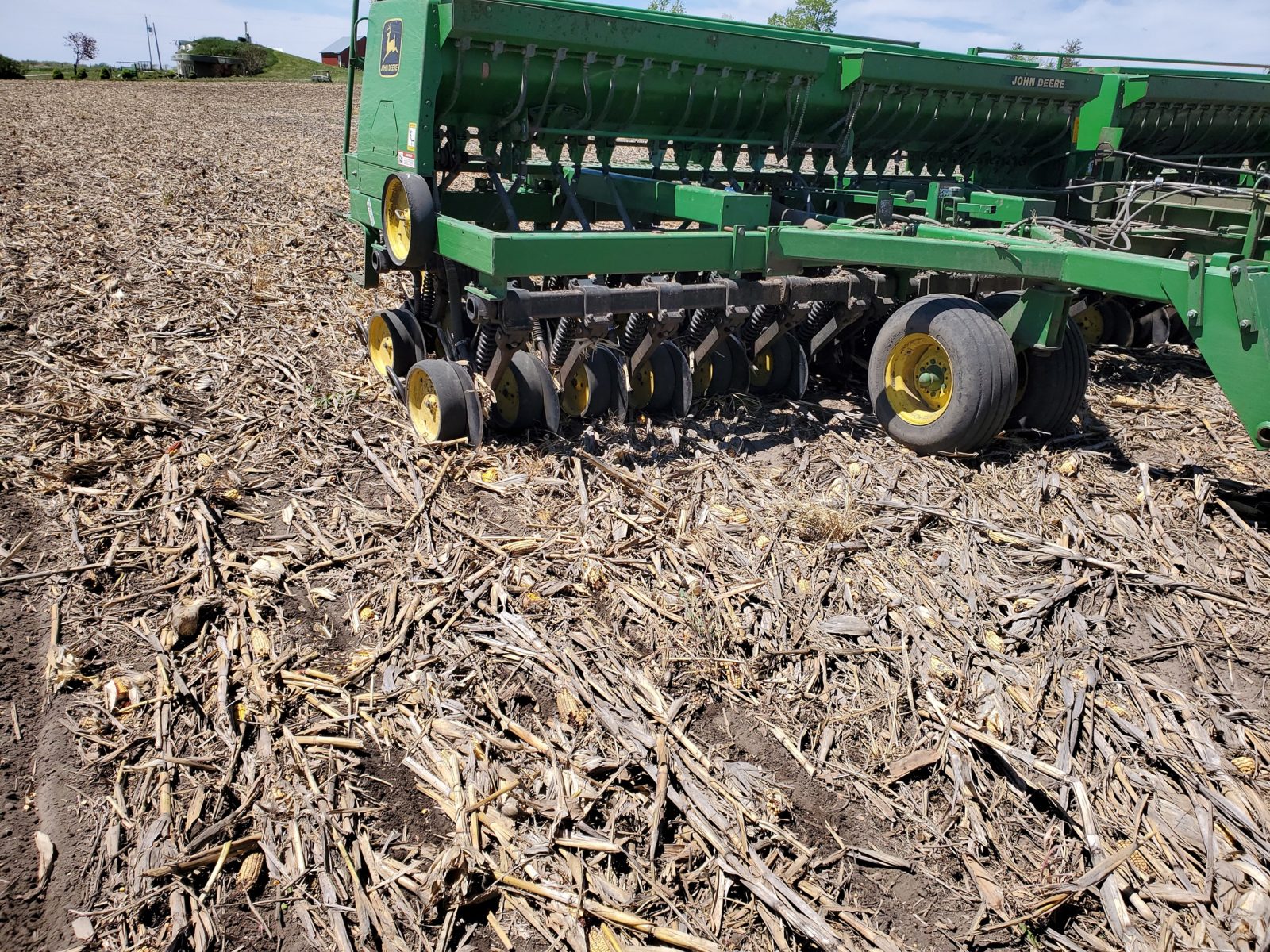We finished planting the 2021 crop on May 14.
The last field we planted was soybeans we are growing for seed. The local seed company we work with delivered the seed to us from South America. We were told in early April what variety they wanted us to plant, and that they hoped to get the seed to us the second week of May. The seed was harvested and cleaned in South America and shipped to the U.S. It took many people working quickly to get the seed to us, and we did our part to continue to keep the supply cycle moving. We received the seed on the morning of May 14, and by 10 p.m. that night, it was all planted.
 Both our soybeans and corn emerged quickly, and they are looking good so far. The soybeans we drilled into the 600 acres of corn that we were forced to destroy last summer due to the derecho also look good. I was pleased with how well the drill cut through the heavy corn residue, and the soybeans are emerging through that heavier-than-usual residue as good as could be expected.
Both our soybeans and corn emerged quickly, and they are looking good so far. The soybeans we drilled into the 600 acres of corn that we were forced to destroy last summer due to the derecho also look good. I was pleased with how well the drill cut through the heavy corn residue, and the soybeans are emerging through that heavier-than-usual residue as good as could be expected.
Because the soil was really dry when we planted, it warmed up more quickly. Soil with more moisture takes longer to warm up. The quick emergence also means that the crop roots should be moving down toward water deeper in the soil as quickly as possible, and that’s good for the crop.
However, we could really use significant moisture. In my experience farming, I’ve seen that weather patterns that get established in the spring continue through the season. Dry weather like we have creates more dry weather because potential moisture evaporates more quickly as it moves over the dry area. Clouds don’t have a chance to release their moisture. I’ve also seen wet patterns that provide too much moisture. We are hoping to get a good rain to break this pattern.
My brother Pete sprayed a soil-applied herbicide on all the soybean fields as they were planted, so those fields are relatively clean. It will be a few weeks before we return to these fields to apply herbicides again.
Now he is applying a combination of a burndown and residual herbicide to our corn fields to control the weeds. Because of our no-till system, we wait until after planting corn to apply herbicides. The corn planter moves a small strip of crop residue to the side when the seeds are planted. If the herbicide had already been applied, it would be moved away from that strip, allowing weeds to grow right next to the emerging corn, stealing moisture and nutrients from the crop. He expects to be done applying corn herbicide by the end of May.
 With the crops planted, we have a bit of a break from fieldwork to catch up on other work. We noticed spots with broken drainage tiles while we were planting, so we are digging up and replacing or repairing those buried tubes before the crops get too big. We also still have trees to clean up from the derecho last summer, some corn from last year to deliver to nearby ethanol plants, and fences to build for my son Schyler’s Scottish Highland cattle. A couple calves have already been born this spring, and he expects another one soon.
With the crops planted, we have a bit of a break from fieldwork to catch up on other work. We noticed spots with broken drainage tiles while we were planting, so we are digging up and replacing or repairing those buried tubes before the crops get too big. We also still have trees to clean up from the derecho last summer, some corn from last year to deliver to nearby ethanol plants, and fences to build for my son Schyler’s Scottish Highland cattle. A couple calves have already been born this spring, and he expects another one soon.
We are also taking care of our pigs. They have grown to about 55 kg, or 120 pounds, but some of them are struggling with health issues. We are working closely with our veterinarian to diagnose and care for them, as we want them to be healthy and thriving.
And we continue to watch the markets and weather around the world. With dry areas in South America and parts of the United States, like us, prices could increase more. Weather and competition from the Black Sea region will impact global prices, as well. Hopefully end users have their needs for this year locked in. But I don’t expect these high prices to last.
I also hope prices don’t get too out-of-control. Contrary to what many think, high prices really aren’t good for anyone. They can price customers out of markets. And while farmers like us might make a good profit for a year, it seems our input prices always increase so that we just barely break even. Those input prices come down much more slowly than crop prices, so we can easily go from a profitable year to losing money.
Regardless of markets, we are glad to have the 2021 crop planted and growing well.

